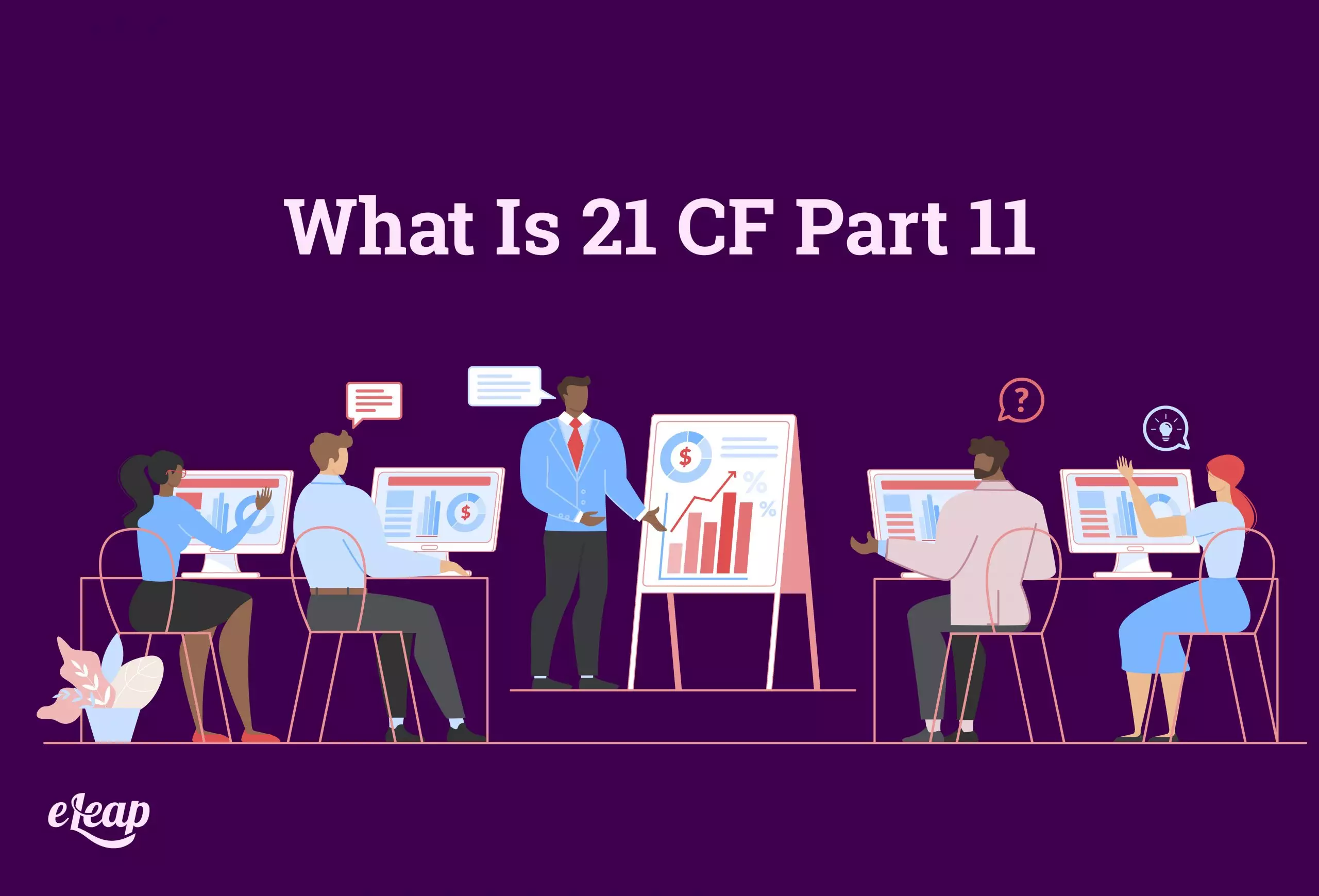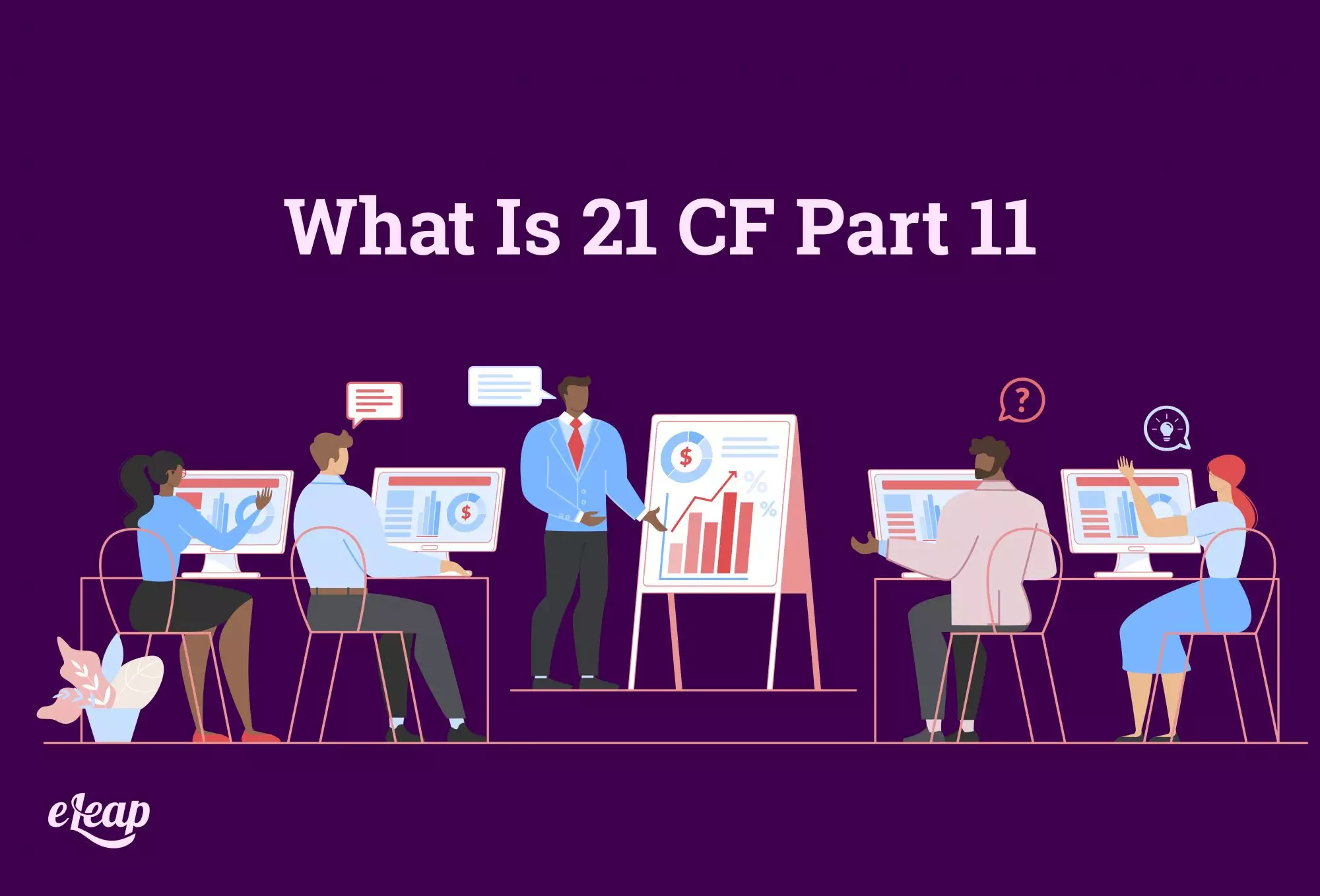What is 21 CFR Part 11
A Guide for Life Science Organizations

If you represent a life science organization – whether that’s medical device manufacturing, pharmaceutical research, or hospital management – you must comply with pretty stringent FDA guidelines and regulations. While there are many hoops to jump through, few are as confusing or have created as much controversy as 21 CFR Part 11. Not entirely sure what 21 CFR Part 11 is, how it applies to your organization, or what you need to do to comply with those rules? It can be confusing, but we’ll shed some much-needed light on it in this post.

What is 21 CFR Part 11, Anyway?
21 CFR Part 11 is part of the larger 21 CFR (Code of Federal Regulations). This specific section of the code applies to electronic (digital) records and signatures. Specifically, it’s all about things like:
- How you store digital data in your system
- How users access digital data in your system
- What checks and safeguards you have in place to protect data
- What rules you have for digital signatures
Ultimately, this part of the federal code has several primary purposes. They are:
- To ensure that digital records are managed safely
- That consumer and business/organization data is protected from bad actors
- That there is a system to enforce accountability and traceability in place
- That there are rules in place regarding digital signatures
- That digital records and signatures are as legally binding and trustworthy as their physical counterparts
- That life science organizations are following the same rules when it comes to FDA regulations
Does 21 CFR Part 11 Really Apply to My Organization?
Yes, most likely. It’s incredibly rare for a business not to fall under this heading. If your organization stores digital records of any type for any reason, and the organization is subject to FDA oversight, then you must comply with the rules set out in 21 CFR Part 11. What does that mean for you, though? See if your organization must comply with Part 11.
The Requirements You Need to Follow
To comply with 21 CFR Part 11, you need to follow a few basic rules. Like all federal regulations, they’re written in legalese, so it can be hard to understand what the FDA’s asking of your organization. However, when you strip away legal terms and put those requirements in plain language, it becomes easy to see that they’re actually about making your life easier and don’t necessarily constitute a major headache when it comes to enacting them.
1. System Validation
First, you must validate all systems in use to “ensure accuracy, reliability, and consistent intended performance.” In plain language, that means you need to define how all of your systems should work together and then make sure that they work as intended. The right validated LMS can dovetail with your existing systems and, if tested fully by the developer, will not require additional validation.
2. Record Generation
Your system is required to have a search and index function to help make finding specific records easier and faster. The right LMS will provide that ability but also offer additional information, such as versions, final documents, who authored document changes, and other critical information.
3. Audit Trails
Accountability is of great importance to 21 CFR Part 11. The FDA states, “Use of secure, computer-generated, time-stamped audit trails to independently record the date and time of operator entries that create, modify, or delete electronic records.” Your system must track, record, and maintain audit trails that show who did what, when, and why. The right LMS will have this capability baked in by the developer.
4. Operational Controls
The right LMS will provide you with operational controls that help determine how documents are reviewed, who can review them, and that certain conditions are met before the documents are signed off on – such as administration verifying that a learner has completed lead-up material before they sign off on completion of the final part of a certification course.
5. Security Controls
You must have gated security in all systems. This might be something as simple as a unique username and password for each user. However, it can also include two-factor authentication, biometrics, and more. The right LMS will support any combination of security controls your organization requires for protection.
6. Digital Signatures
The FDA explains, “A digital signature is an electronic signature based upon cryptographic methods of originator authentication, computed by using a set of rules and a set of parameters such that the identity of the signer and the integrity of the data can be verified”. Digital signatures can be used in place of physical signatures, and the right LMS provides direct visibility and control over all digital signatures in the system.
7. Training
The FDA requires that all users have training in how the system works. The right LMS is uniquely suited for this, as it can provide a “how to use the system” training customized to different learner’s requirements and needs.
Is eLeaP Right for Your Organization?
Answering the question of what is 21 CFR Part 11 is not all that difficult. However, determining the code’s impact on your organization and your choice of digital systems is more daunting. A single misstep could mean facing penalties after an FDA inspection.
Finding the right learning management system can be challenging, particularly for organizations that fall under FDA oversight. 21 CFR Part 11 sets stringent requirements that must be met when it comes to all electronic records and signatures in the organization, and that includes learning management efforts. At eLeaP, we have exhaustively developed and tested our LMS to ensure that it is fit for your intended purpose and meets or exceeds all FDA requirements. Contact us today to schedule your custom consultation.